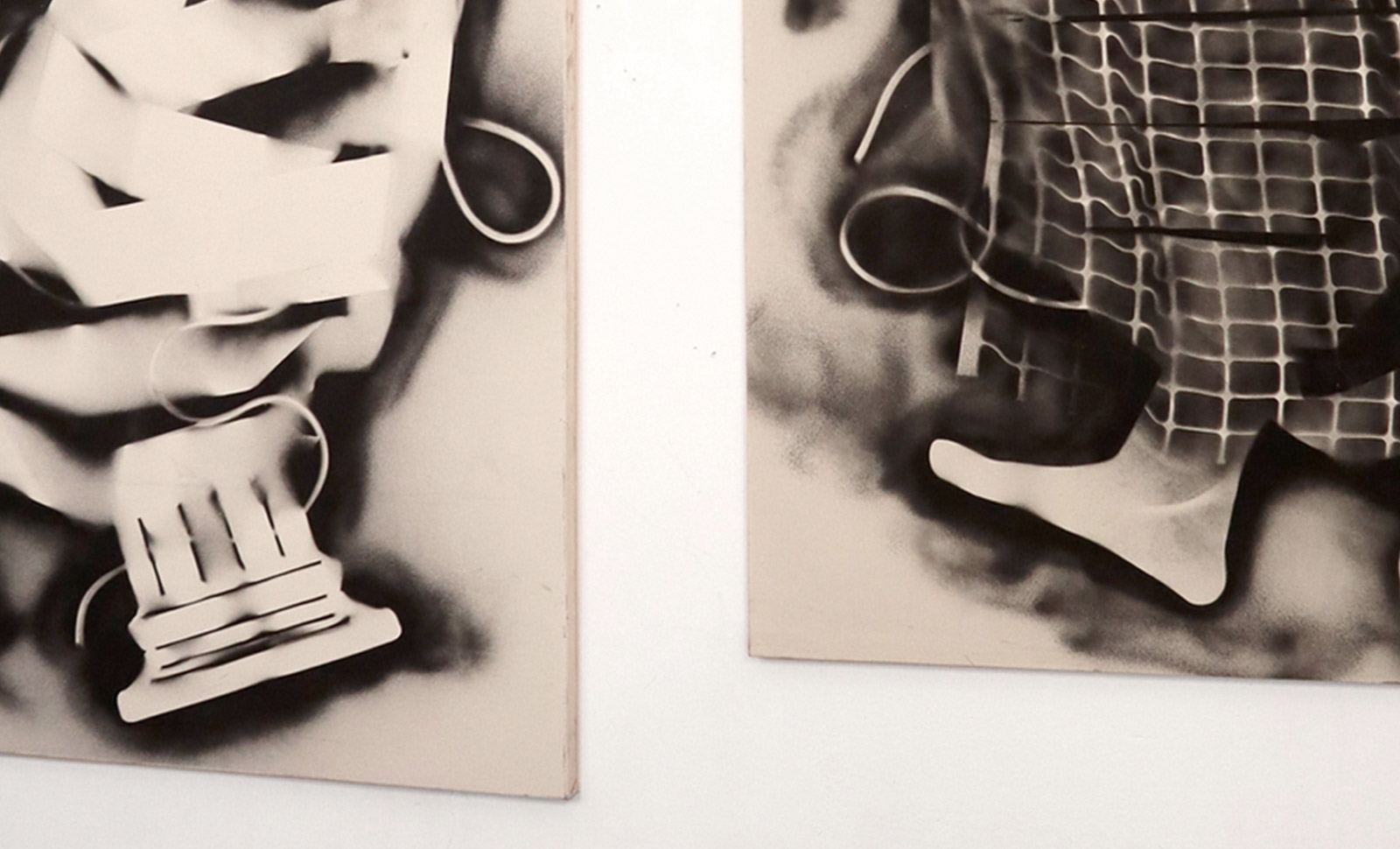EVENTS AND EXHIBITIONS
May 12, 2023
Exhibition at the Rodríguez Gallery
vernissage: 11.05, at 19:00
exhibition: May 11–June 7, 2023
finissage and Artist Talk: 02.06, at 19:00 (Agnieszka Grodzińska talks to Romuald Demidenko)
Agnieszka Grodzińska, instead of talking directly about her works, prefers to leave clues, fragments of shapes or thoughts from which a story can be composed. The word shape he uses can be read as a term for negative traces on the surfaces of prints and sculptural works. He often uses a found image, he also uses the term found footage found in the film. He selects photographic shots from various sources, collects fragments of texts and, using a photocopier, enlarges the images and duplicates them, preparing scaled shots with a clear raster.
The central element of the exhibition is the installation How The Ruler is Made, filling the gallery room and even giving the place a new form, covering smaller graphic works and openwork sculptures made in recent years. Larger parts of the arrangement made of thick material resemble scaled tongues with long zippers or small cuts through which you can see the layers.
Works such as Quiet Quitting, Full Time Sunday, Nonsense & Inconsistency are soft objects made of several types of fabrics. They have stitching and zippers separating the space. Semi-transparent layers of fabric in bright colors contrasted with accents in the form of red, navy blue and black almost interact with the paintings, creating cascading screens. There are larger holes in the fragments of the works. Others have small gaps with geometric or textual shapes. On the surface of some of them, elements in the form of veins can be seen loosely penetrating the faces of the sculptures.
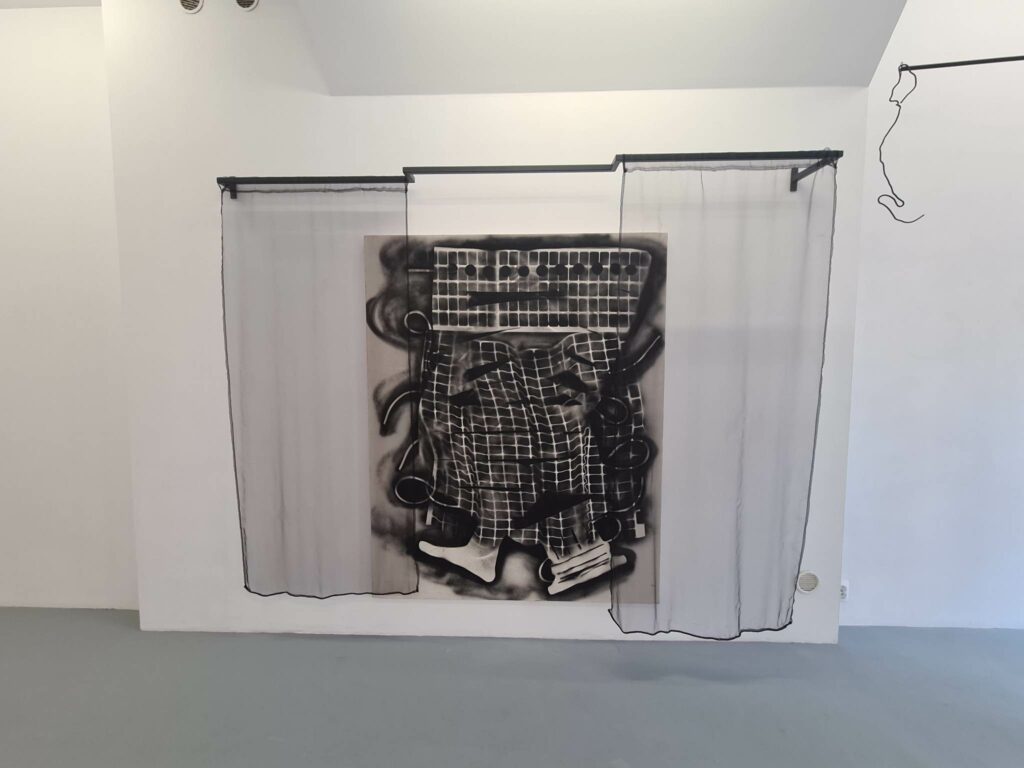
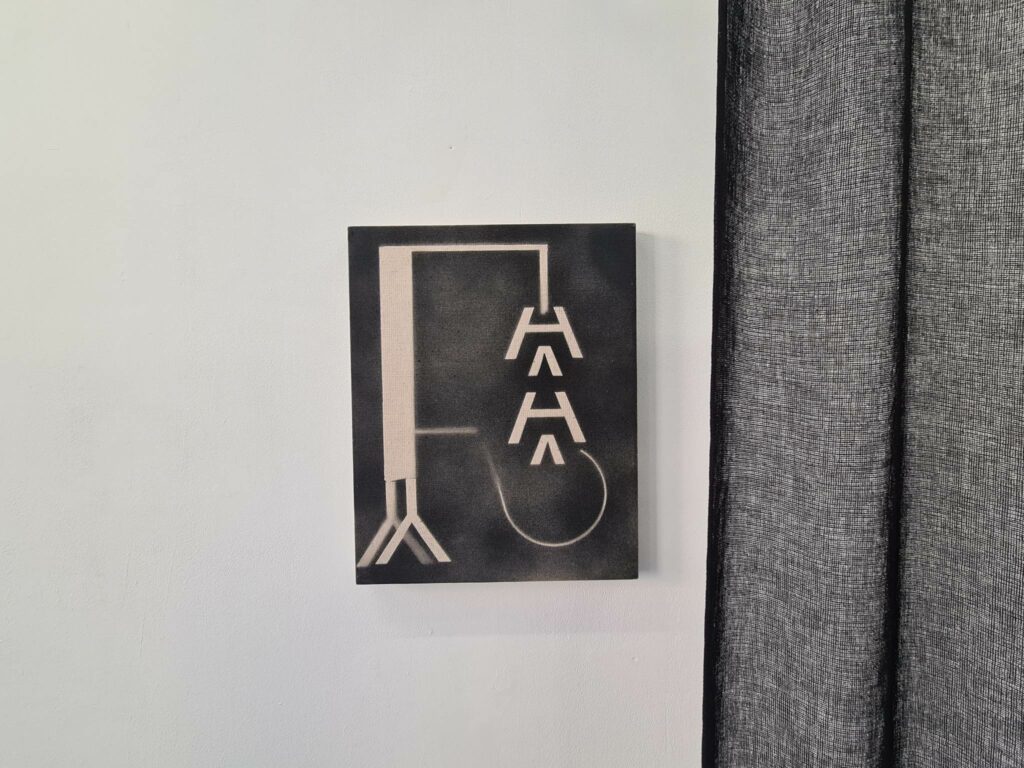
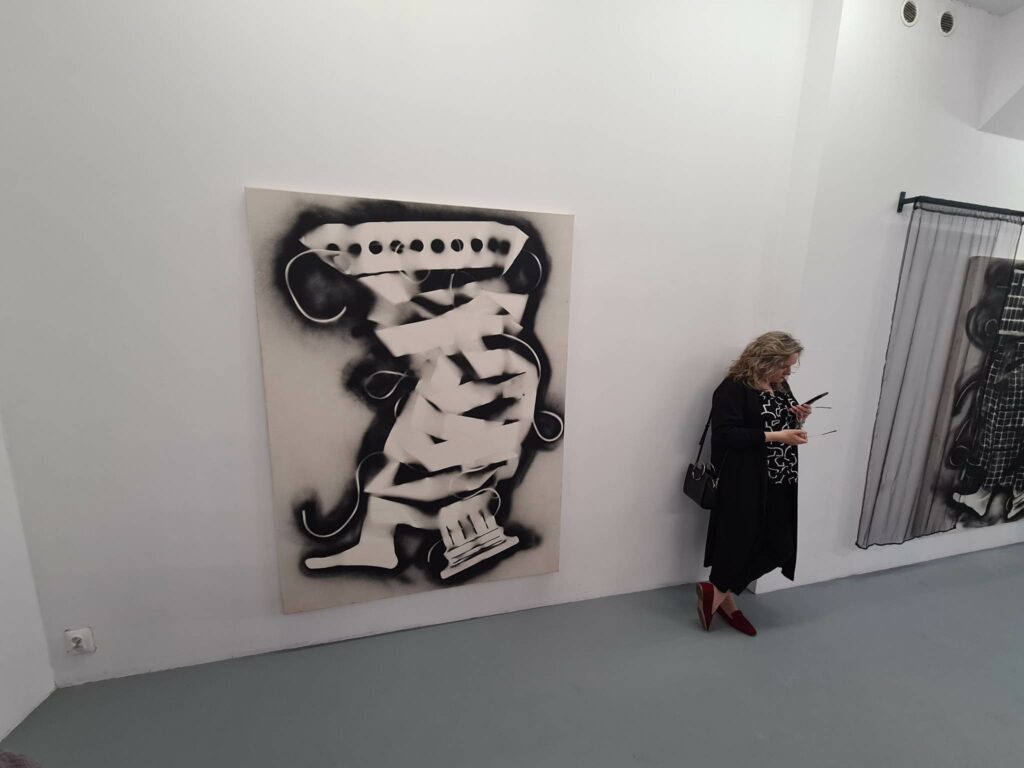
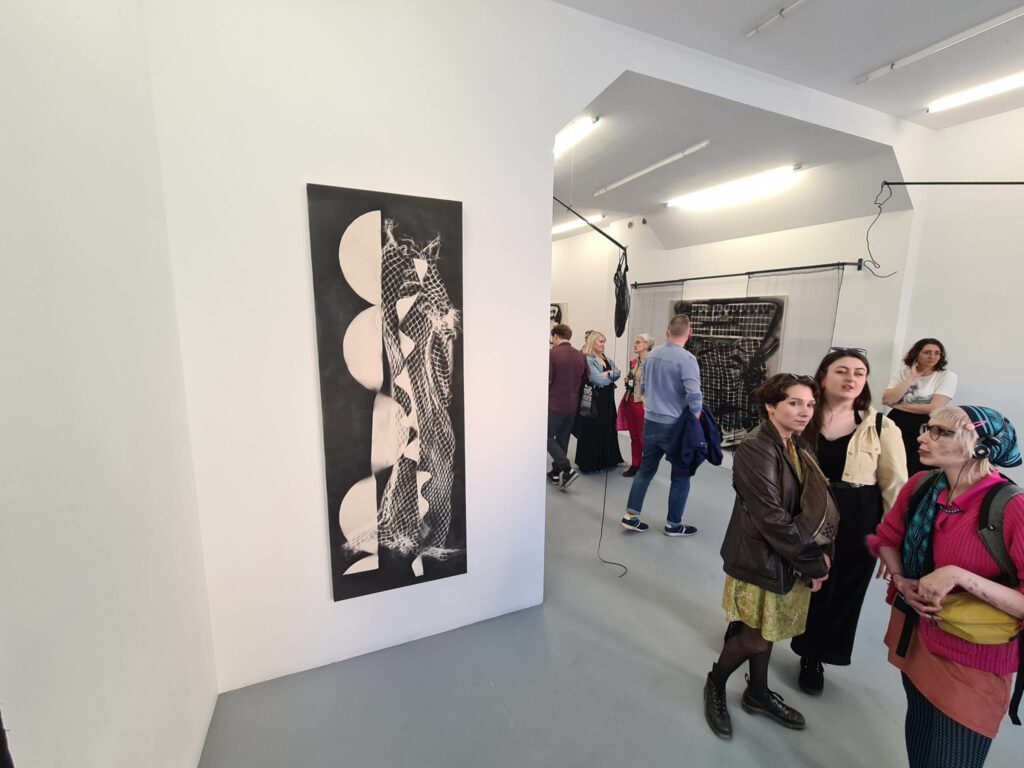
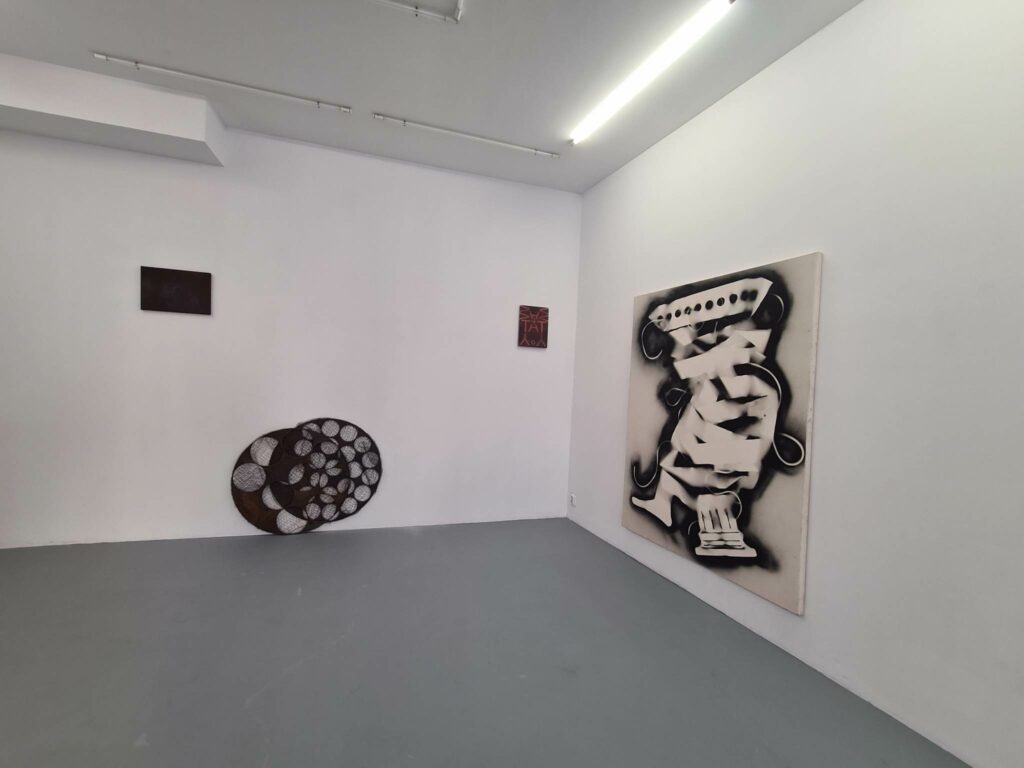
Only when approaching, we can look inside the artist’s objects and recognize in them patterns “imprinted” with the help of stencils and overlapping each other, or blurred contours – traces of tools with intriguing shapes that bring to mind phantoms of erotic accessories. It seems as if the exhibition was to be a pretext to arrange all the elements in the order of similarity and create one spatial composition from them. The works are repetitive, but also disciplined: their rhythmicity in space is emphasized by axes and interpenetrating patterns.
In Grodzińska’s work, one can find references to e.g. for illustrations from socialist school textbooks or propaganda books about birth and upbringing published in Eastern and Central Europe. One of the artist’s references is the book Modern Man in the Making by Otto Neurath, a sociologist-economist and pioneer of pictograms, which we still use today. It seems that when it was founded in 1939 and for the following decades, it was deeply believed that everything could be designed. The schematically visualized figures are a kind of legend superimposed on the map of the world, which goes hand in hand with the Western tendency to normativize society.
Heads and masks are a frequent theme at the exhibition, with various variants appearing in the form of reflections and patterns in works made of industrial rubber. The artist perfectly knows the properties of this material and uses its plasticity and rawness. He knows how to behave and arrange. The basis for the painting is denim formerly used in work and military clothing, the texture of which is as visible as the patterns used by the artist. They are applied to a thick material using acrylic and fabric paints, often in a range of red, navy blue, white, black and shades of grey.
Grodzińska calls herself a “collector of reproductions”, which can be read as an obsessive collection of existing paintings and their secondary versions. One of the key motifs appearing in many of the artist’s sculptures and assemblages are patterns from duplicated pictograms schematically depicting the figure of a mother changing her baby. Reproduction, the term used for duplication, acquires a biopolitical dimension here. Another pattern is the contours of the home, that is, the refuge, which today, like the normative concept of the family, no longer seems accessible to everyone, but becomes a privilege.
The artist draws attention to the problem of interpreting half-truths that are considered obvious and hidden behind commonly used terms. Using the artistic language he has created, he also refers to personal observations: the repetition and rhythm of placing works in space can be read as discipline and a constant attempt to control, improve and create order, even where they are not necessary. And perhaps here, finally, the futility of supervision of an individual, the pressure of belonging to a group and the difficulty of functioning in a community become visible. While the old order excludes and takes away, the new, potentially better, has yet to arrive. Or is it just happening and repeating all the mistakes?
Text: Romuald Demidenko
